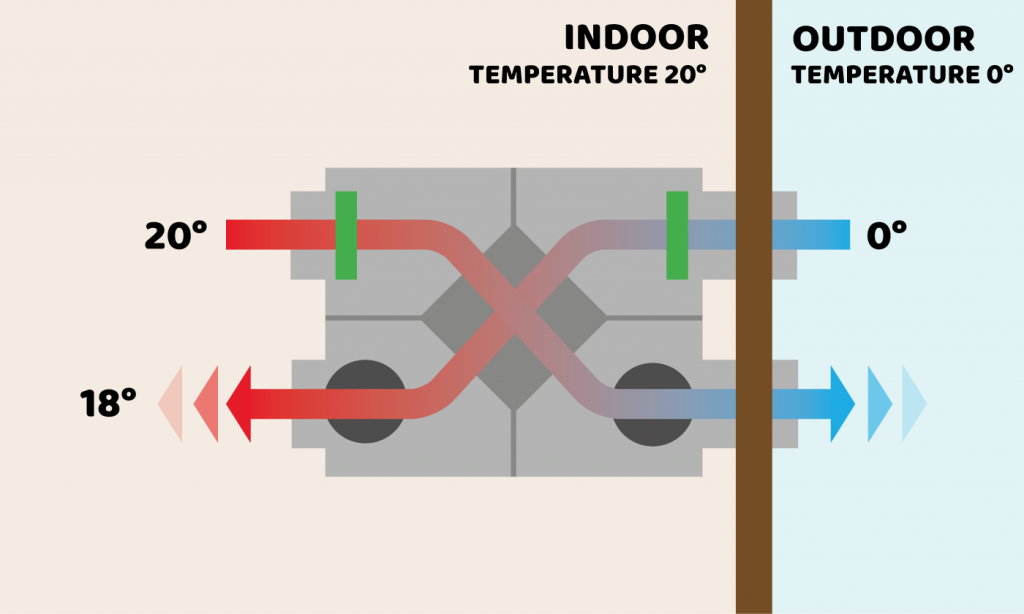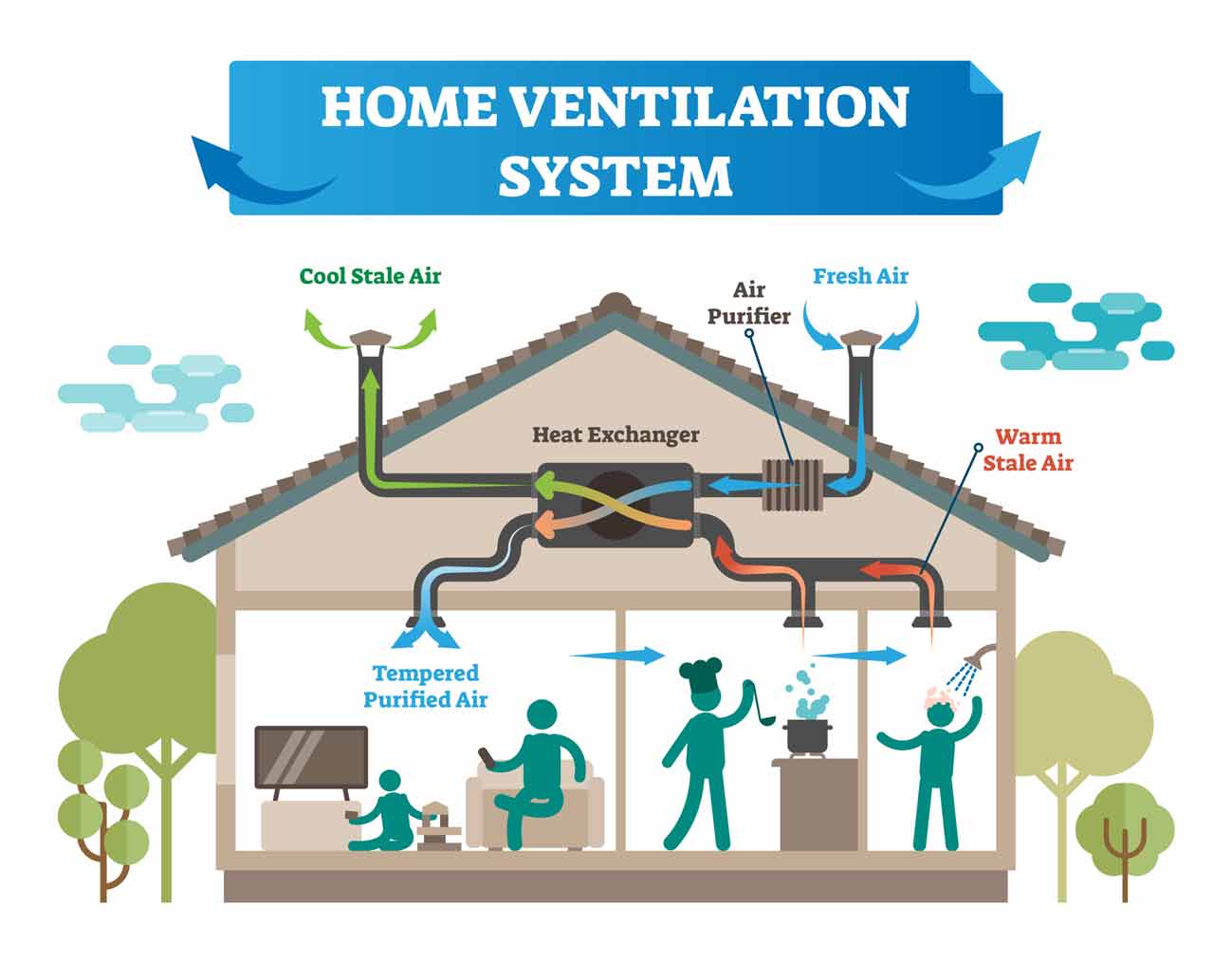The All-Inclusive Guide to the Uses of Heat Recovery Ventilation in Modern Structures
Heat Recovery Ventilation (HRV) systems stand for a significant improvement in building innovation (HRV Heat Recovery Ventilation). They offer an approach for exchanging stagnant indoor air with fresh exterior air while reducing power loss. This approach not just enhances interior air high quality however also adds to power effectiveness in both household and commercial buildings. Understanding the different applications and benefits of HRV can reveal its important function in modern-day design and sustainability efforts. The implications of this modern technology deserve discovering additionally
Understanding Heat Recovery Ventilation Solutions

Many contemporary structures focus on energy effectiveness, recognizing heat healing ventilation (HRV) systems is crucial for enhancing interior air top quality and lowering power consumption. HRV systems work by transferring heat from stale indoor air to incoming fresh air, effectively maintaining comfortable indoor temperatures while lessening energy loss. These systems include a warm exchanger, fans, and ductwork that help with the flow of air. During wintertime, HRV systems catch and reuse warm from the outbound air, while in summertime, they can help cool inbound air. By continually trading air, HRV systems likewise minimize humidity and the concentration of interior toxins. Appropriate setup and maintenance of HRV systems are vital for their effectiveness and effectiveness in boosting total building performance and comfort.
Advantages of Heat Recovery Ventilation
Heat recovery ventilation systems offer countless advantages that enhance both energy effectiveness and indoor air quality in contemporary structures. By recording and reusing energy from exhaust air, these systems substantially minimize home heating and air conditioning costs, resulting in reduced power consumption. They keep a consistent flow of fresh outside air, reducing the danger of interior air contaminants and allergens. This constant exchange assists control humidity levels, protecting against mold development and ensuring a healthier living environment. Furthermore, HRV systems add to sustainability objectives by decreasing general carbon impacts. Their capacity to optimize ventilation without giving up thermal convenience makes them an important enhancement to modern structure design, promoting both financial and ecological advantages.
Applications of HRV in Residential Structures
As homeowners increasingly focus on power effectiveness and interior air quality, the applications of warm healing ventilation (HRV) systems in domestic buildings have actually become much more widespread. HRV systems are particularly valuable in firmly secured homes, where keeping fresh air flow is crucial for preventing wetness accumulation and interior toxins. They properly move heat from outgoing stale air to incoming fresh air, minimizing energy special info costs related to heating & cooling. Furthermore, HRVs can enhance comfort levels by regulating humidity and temperature. They are also adaptable for various domestic layouts, consisting of single-family homes and multi-unit structures. Overall, integrating HRV systems supports lasting living techniques while making certain a much healthier interior setting for occupants.
HRV in Commercial and Industrial Setups
In commercial and industrial settings, the application of warmth healing air flow (HRV) systems has actually come to be significantly essential for optimizing energy efficiency and maintaining air quality. These systems effectively move warmth from read what he said exhaust air to inbound fresh air, reducing the need for additional home heating or cooling. This not just decreases power expenses however likewise adds to sustainability campaigns. Industries such as production, warehousing, and workplace buildings benefit greatly from HRV systems, as they help manage temperature level and humidity degrees, guaranteeing a comfortable and effective setting. HRV systems aid in eliminating pollutants and excess moisture, boosting interior air high quality. As guidelines around air high quality come to be more stringent, the fostering of HRV technology is likely to expand, making it a crucial part of modern-day business and commercial infrastructure.
Future Fads in Heat Recovery Ventilation Technology

Often Asked Questions
Exactly How Does Heat Recovery Ventilation Influence Indoor Air High Quality?
Heat recovery ventilation considerably enhances indoor air top quality by constantly exchanging stagnant interior air with fresh exterior air while recuperating power. This procedure minimizes pollutants, keeps ideal moisture degrees, and assures a much healthier setting for residents.
Can HRV Solutions Be Mounted in Existing Structures?
HRV systems can without a doubt be mounted in existing structures. Retrofitting might need alterations to ductwork and ventilation formats, however it considerably boosts power efficiency and interior air high quality, making it a viable alternative for older structures.
What Maintenance Is Required for HRV Solutions?

Are There Details Climates Where HRV Is Extra Efficient?
Heat recovery ventilation systems are particularly effective in climates with significant temperature level differences in between seasons. These systems optimize energy performance by recovering heat from exhaust air, making them ideal for both cool and reasonably cozy settings.
Exactly How Do HRV Systems Affect Power Costs?
